Articles
Knowledge Center
What is MRP? History, Definition, and How it Works
Running a manufacturing process without an organized system often leads to chaos—too many raw materials or not enough to meet customer demand. That’s where material requirements planning (MRP) comes in. So, what is MRP? It’s a planning system that helps production managers calculate the materials needed, schedule production efficiently, and balance inventory levels with actual […]
Read More
15 Types of Pallet Racking
Discover the different types of pallet racking systems to optimize your storage solutions. Improve efficiency in your warehouse—read the full guide now!
Read More
All About Flatbed Trucks: Definition, Types, and Uses
Flatbed trucks are most often encountered when there is a need to transport oversized items that would be difficult or impossible to place in a conventional cargo vehicle. While these rigs may seem simple, they are essential in transportation. Additionally, there are various flatbed trucks for sale, offering a wide range of options and […]
Read More
What is a Courier Service: Meaning, Benefits, and Functions
When you need customizable and speedy pickup and delivery services to keep your supply chain flowing, you might consider the post office. Unfortunately, the post office charges high rates for anything faster than the norm, and its services are limited. The solution exists with couriers In the past, courier services were limited to local […]
Read More
Essential Guide to Quality Control in Manufacturing Best Practices
Discover essential best practices for quality control in manufacturing to enhance efficiency and reduce errors. Read the article for practical insights.
Read More
Understanding Slow Moving Inventory Definition: Identify and Manage Your Stock Efficiently
Understanding and managing slow-moving inventory is crucial for maintaining a healthy and efficient inventory system. By identifying the causes, using key metrics for identification, and implementing effective management and preventive strategies, businesses can turn their slow-moving stock into a streamlined asset.
Read More
Optimizing Your Pharmaceutical Warehouse: Best Practices and Standards
Pharmaceutical Warehousing: Definition, Handling Standards, and Supply Chain Rules Pharmaceutical warehouses are specialized storage facilities that safely store pharmaceutical products, including medications, vaccines, and other health-related items. For the pharmaceutical industry, warehouses play a crucial role in safeguarding the integrity and quality of medicines that impact billions globally. They are not just a storage […]
Read More
What is FOB Destination? Meaning, Terms, Who Pays?
If you’re in the shipping industry, you need to be familiar with the shipping term FOB destination and all it implies. You should be able to answer the question of what does FOB mean in shipping and convey the fob price meaning. FOB is an acronym that means “free on board,” so FOB destination […]
Read More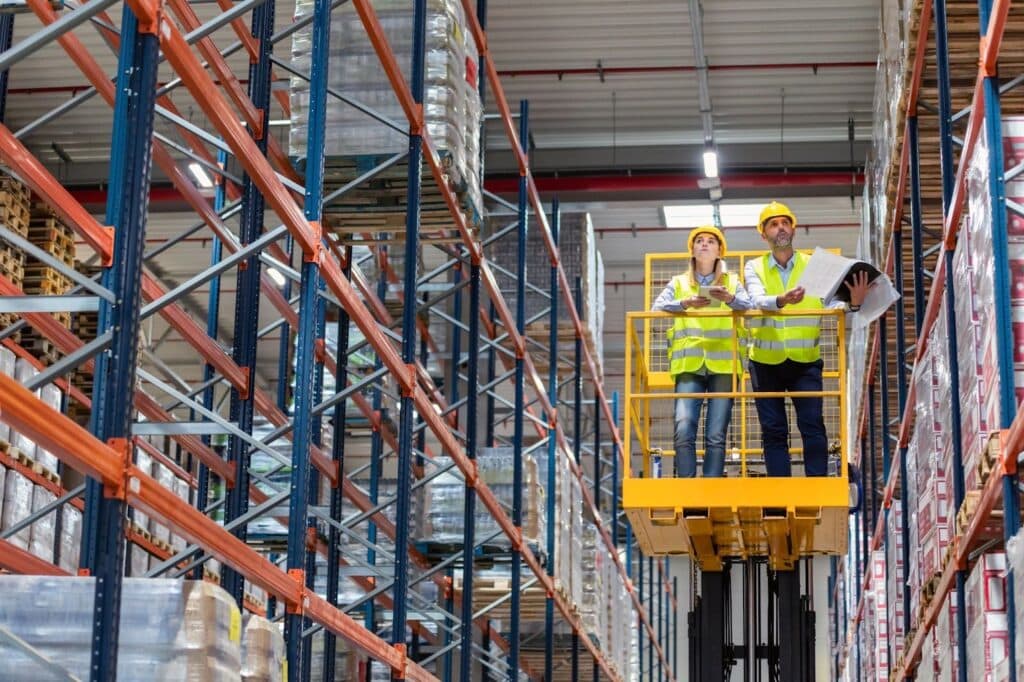
Vertical Warehousing: What It Is, Analyzing, and Benefits
Logistics operations face increasing demands for smarter and space-saving storage strategies due to rapid growth in e-commerce and shifting consumer expectations. Businesses with limited floor space often struggle to scale efficiently without expanding their facility’s footprint. Adopting vertical warehousing helps companies build upward rather than outward, maximizing storage capacity and enhancing operational flow. This innovative […]
Read More
Just-In-Time Inventory: Definition, Advantages, Disadvantages
Just-In-Time inventory, or JIT, is a strategy that streamlines a business’s inventory and improves efficiency by receiving goods only as they are needed and minimizing inventory costs. This method helps maintain a lean inventory, significantly enhances cash flow, and reduces waste. In this guide, we will extensively review the JIT inventory system, exploring its core […]
Read More
Last Mile Delivery: Trends, Cost and How to Optimize
Efficient last mile delivery plays a crucial role in ensuring timely shipments, meeting customer expectations, and enhancing brand reputation. By addressing last mile delivery challenges such as route optimization and failed deliveries, businesses can strengthen their supply chain and reduce costs.
Read More
Pop-Up Warehousing: Definition, Risks, and Benefits
Pop-up warehousing offers a flexible solution for businesses facing supply chain uncertainties. It helps them adapt to fluctuating demand, manage seasonal products, and expand without committing to permanent infrastructure.
Read More
End-to-End Supply Chain: Meaning, Benefits, and How to Implement
Fast delivery and exceptional service aren’t luxuries—they’re expectations in today’s competitive landscape. Meeting customer demands requires more than efficient shipping—it calls for complete coordination of the entire supply chain process where an end-to-end supply chain shines. An end-to-end supply chain covers everything from sourcing raw materials to final delivery and after-sales support. This integrated […]
Read More
MOQ Meaning: Its Formula, and How To Optimize It
Minimum Order Quantity (MOQ): Meaning, Formula, and How To Optimize It Minimum Order Quantity (MOQ) represents the smallest amount of a product a supplier is willing to sell at one time. Businesses commonly use minimum order quantities to streamline production processes, manage costs, and meet operational demands. Understanding MOQs ensures better planning and efficient inventory […]
Read More
8 Types of Warehousing Processes
Warehousing is a critical link in the supply chain. It facilitates the storage, handling, and distribution of goods. Effective warehouse management can optimize inventory control and meet customer demands efficiently by utilizing a warehouse management system (WMS). Within this context, warehousing processes ensure smooth operations and maximize warehouse efficiency. This article discusses various warehousing […]
Read More
Inbound Logistics: Definition, Examples, and Process
Logistics is an essential aspect of any business, as it involves planning, organizing, and managing the flow of goods, services, and information from the point of origin to the point of consumption. It encompasses the entire process of sourcing raw materials, assembling products, and delivering finished goods to customers. Logistics can be divided into […]
Read More
Drayage vs Intermodal: Explaining Two Connected Transportation Modes
Efficient logistics rely on different modes of transportation to move freight smoothly from one point to another. Two crucial methods are drayage and intermodal transportation, each serving distinct roles in the supply chain. Both methods handle goods efficiently but differ in scope and purpose. Drayage focuses on short-distance transport, often between transportation hubs like rail […]
Read More
Partial Trucking: Pros, Cons, and Why You Should Use It
Finding the perfect balance between shipping costs and efficiency can be challenging for businesses. Traditional options often fall short for shipments that are too large for LTL shipping but too small for a full truckload, leading to wasted space or higher expenses. This is where partial truckload (PTL) steps in, offering a smart solution that […]
Read More
Warehouse vs. Inventory: Their Roles And Differences
Understanding the crucial differences between warehouses and inventory is essential for operational excellence in supply chain logistics. This article explores the roles and connections between warehouse capacities, inventory management, and their impact on inventory and warehouse operations in enhancing overall supply chain efficiency. Understanding Inventory Management Definition and Key Concepts Warehouse management is the […]
Read More
Transportation Management System: Meaning, Importance, and Benefits
Transportation management systems help manage various transportation activities such as shipping, tracking, and delivery. A transportation management system (TMS) — also referred to as a transport order management system, transportation management solution, on demand transportation management system, 3pl transportation management system, or integrated transport management system—benefits businesses by providing cost savings, improved efficiency, and […]
Read More